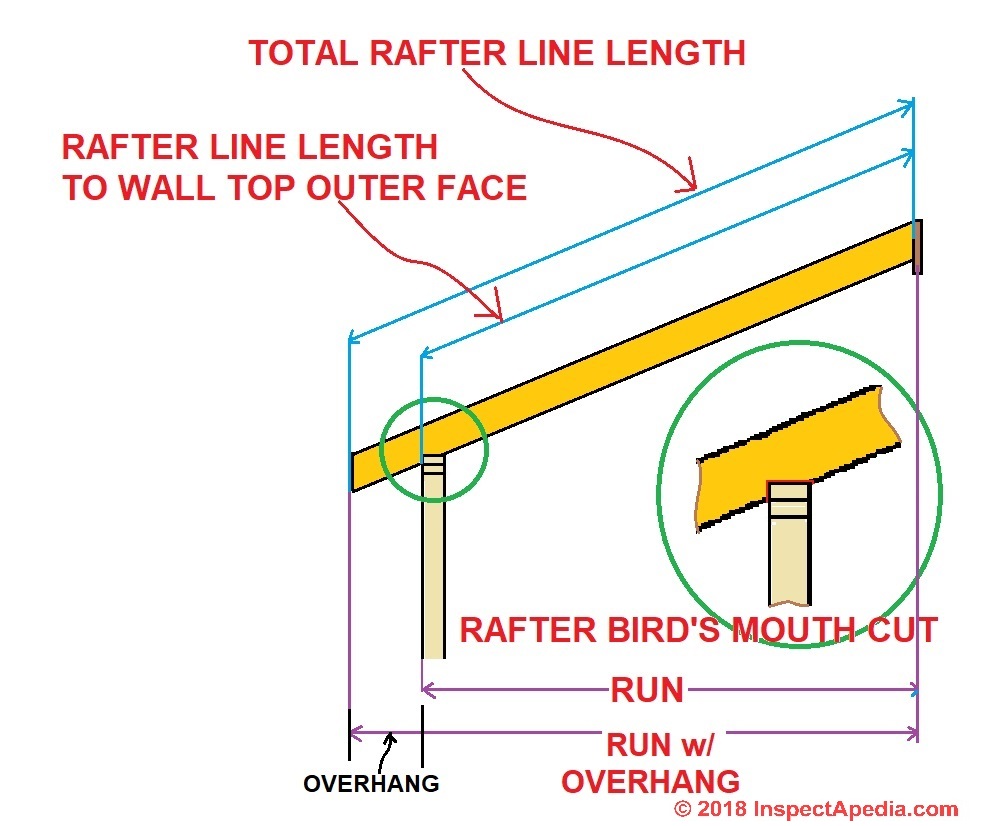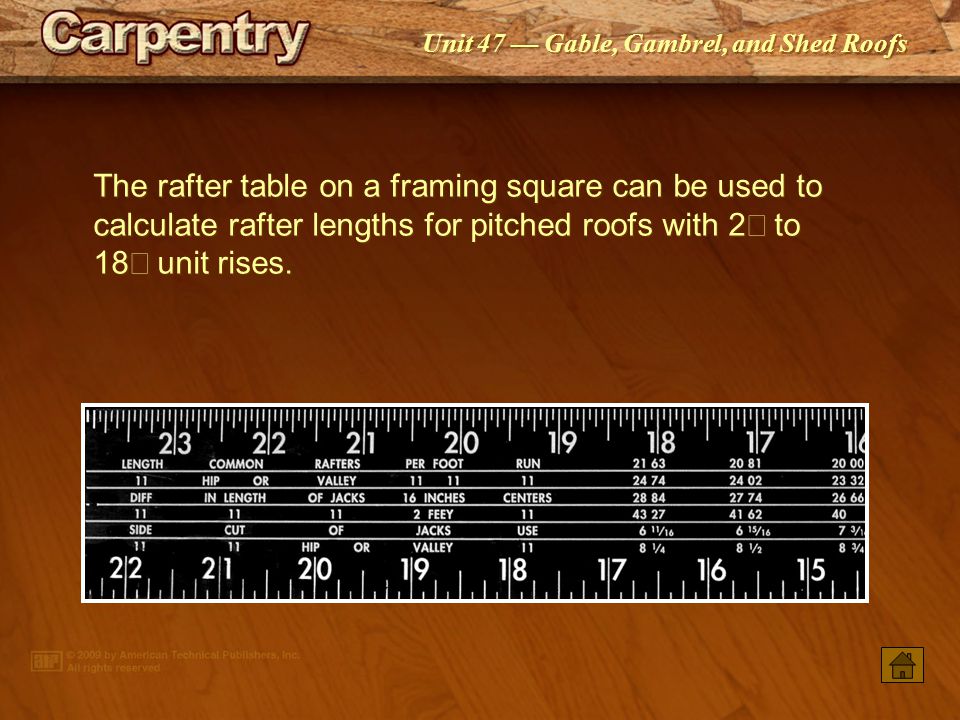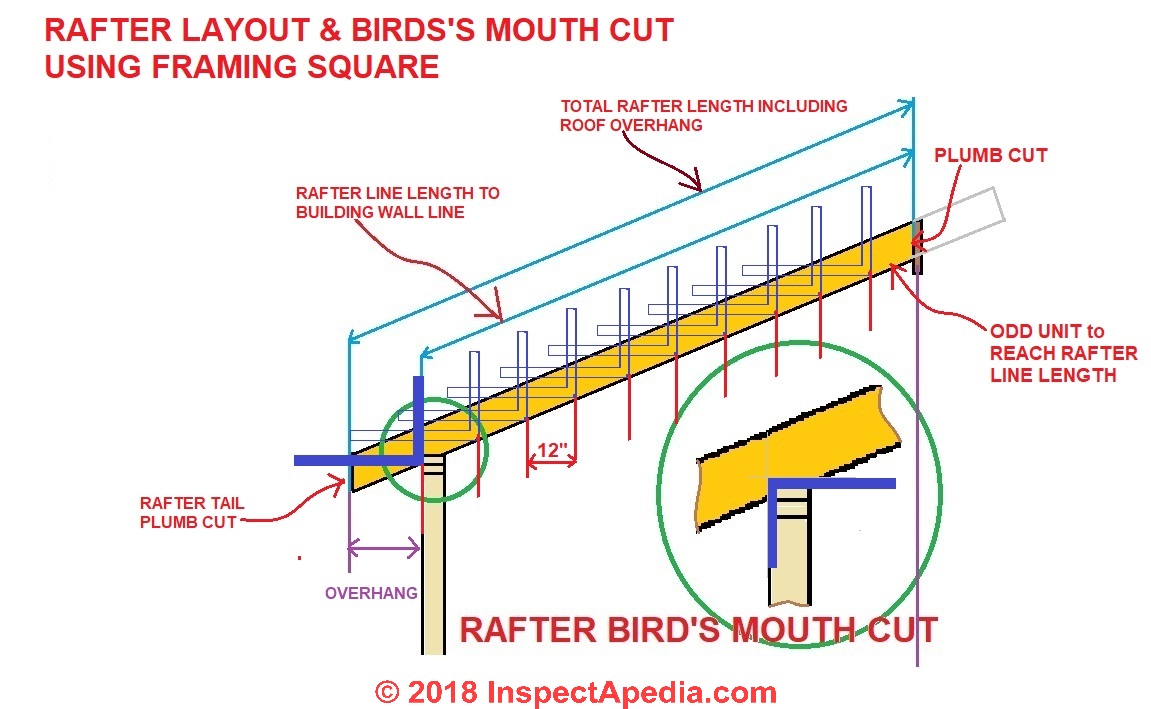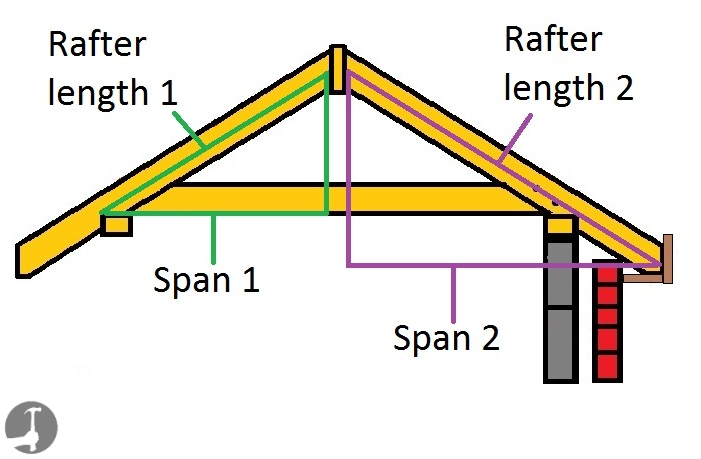To cut roof rafters start by fixing the stair gauges on your framing square to the dimensions of your pitch. Framing square n joists rafters n run ft in.
Place a 2 by 6 board on sawhorses to lay out the first full length or common rafter.

How to use a framing square to cut rafters.
6 50 ft.
12 04 ft.
Determine the roofs pitch.
Figure the span of the common rafters.
The pitch is defined as the vertical distance a roof.
The run is 30215.
Find the run of the rafter.
How to layout rafters with a framing square.
Next set the framing square on top of the rafter beam and use a pencil to trace the outside edge of the framing squares tongue.
Lets assume we want the rafters to cover half the building.
Assume 30 feet for this example.
Ability to read a tape measureruler.
Determine the slope or pitch of the roof by referring to your building plans.
The horizontal blade should align with the bottom edge of the board at 12 inches and the vertical tongue should align at the roof pitch.
Use the square to draw the vertical cut into the rafter.
Place the framing square flat near the end of a board you want to use as a roof rafter.
12 10 ft.
Demonstrate the basics on calculating laying out and cutting a common rafter for either a full gable roof or for a shed roof on a porch or small addition.
Its the width of the building.
Lay a framing square flat on the board to be used as a rafter near one end.
Then mark the cut.
Familiarity with using a speed square.
How to build roof rafters using a framing square.
Convert inches to decimal fractions of a foot using the framing square.
Layout the plumb cut and level cut for the rafter tail.
Once youve marked the lines use your pencil to draw the diagonal length on the rafter.
Ability to safely operate a circular saw.
Use the framing square to draw the seat cut the horizontal parallel to the ground line to meet the flat surface of the top of the wall plate.
Found under the 9 11 inch columns on the framing square blade back this framing square table converts inch measurements into decimal fractions of a foot.
Align the blade with the bottom edge of the board and the tongue with the roof pitch.














No comments:
Post a Comment